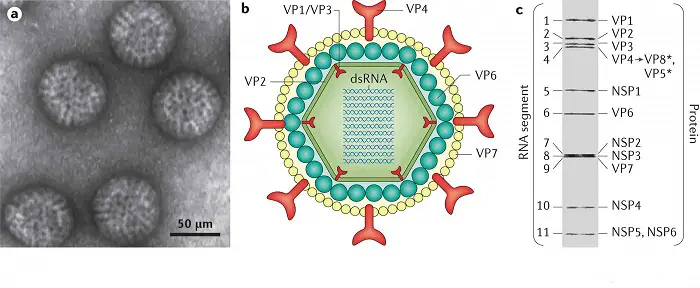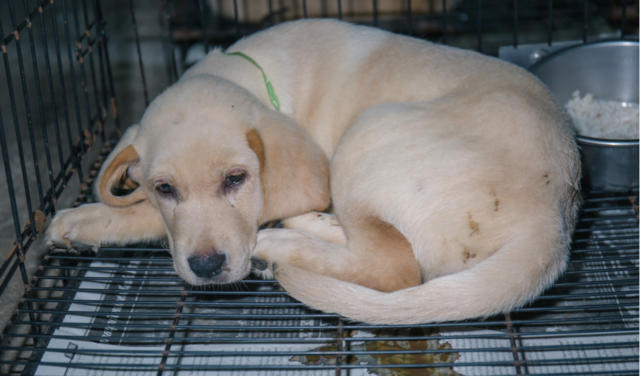Rotavirus in dogs is relatively common, and every dog gets in touch with it at any point in their lives. Rotavirus is a double-stranded RNA virus that affects many hosts, including humans. The virus is highly host-specific, and numerous strains have been identified.
Causes of Rotavirus in Dogs
Rotavirus is recognized as an important enteric pathogen in many animal species and people. They are sometimes referred to as duovirus, rotavirus-loke, and rota-like virus agents. The Canine Rotavirus (CRV) is a double-standard RNA, a nonenveloped virus that is about 60 to 75 nm in diameter. The virus is resistant to most environmental conditions outside the host.
Rotavirus has been isolated in tissue cultures or observed by an Electronic microscope of specimens from many species, including mice, monkeys, calves, pigs, foals, lambs, humans, rabbits, cats, dogs, and deer.
Epidemiology of Canine Rotavirus
Rotaviruses are transmitted by fecal-oral; contamination. The viruses are well adapted for survival outside the host and passage through the upper gastrointestinal tract. Serum antibodies to rotavirus have been identified in dogs and cats of all ages.
Rotavirus infects most cellular epithelial cells on the small intestinal villi’s luminal tips, leading to mild to moderate villous atrophy. Infected cells swell, degenerate, and desquamate into the intestinal lumen.
Risk Factors of Canine Rotavirus Infection
The following conditions the infection are more common:
- Young age (4 to 8 weeks).
- Poor hygienic conditions.
- Mixed infection with other viruses or bacteria.
- Overcrowding.
- The excessive population of stray dogs.
- Weak immune system.
Clinical Signs of Rotavirus in Dogs
Most clinical rotavirus infections have been demonstrated in the feces of pups younger than 12 weeks with mild diarrhea. Some cases of severe fatal enteritis associated with CRV have been reported to occur in pups as young as two weeks. The clinical signs are usually not as severe as those for other canine enteric viruses.
- Watery to mucoid diarrhea is usual and lasts 8 to 10 days.
- The puppies usually remain afebrile.
- Loss of appetite.
- Vomiting or nausea.
- Loss of body conditions.
- CRV may contribute to generic disease in mixed viral infections.
Diagnosis of Rotavirus in Dogs
The presumptive diagnosis of canine rotavirus is based on characteristic clinical signs.
- History of contamination and contact with infected animals.
- ELISA.
- Latex agglutination test.
- Examination of fecal samples by Electronic microscope.
- Seroconversion is possible but has yet to be widely used.
Treatment and Prevention of Canine Rotavirus
Most dogs recover naturally from their infection. Treatment, if needed, consists solely of symptomatic therapy for CRV-2 enteritis.
- A broad-spectrum Antibiotic can be given to prevent secondary bacterial infection.
- Fluid therapy IV or oral based on the severity of clinical signs.
There is no vaccine available for Canine Rotavirus, and current estimates of the frequency and severity of the disease do not appear to justify vaccine development.
Public Health Significance of Rotavirus in Dogs
Rotaviruses are generally host-specific; however, the various strains cannot be easily distinguished, and the possibility of human infection cannot be eliminated. Rotaviral infection in people usually occurs in young infants and children (younger than four years). Poor sanitation and hygiene exist in developing countries, increasing the prevalence of infection. Routine precautions should be taken by persons handling feces from diarrhoeic dogs.

